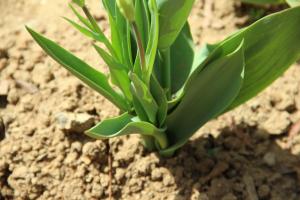How Deep to Plant Palm Tree
Palm trees are a beautiful addition to any landscape. They have always been synonymous with tropical paradise, adding an exotic charm to any garden or backyard. However, planting a palm tree requires a bit of research and planning. One of the most important things to consider is how deep to plant your palm tree. Planting too shallow or too deep can harm the tree and affects its growth. This article will guide you on how deep to plant palm trees and steps to follow for a successful planting process.
Factors to Consider Before Planting a Palm Tree
Before planting your palm tree, it's important to identify the right species according to your climate zone. You need to determine factors like temperature, humidity, and soil moisture. Palms do well in areas with tropical or subtropical climates, but there are species adapted to arid and desert areas. Once identified, you will need to prepare the ground for planting. Choose a location where the palm tree will receive plenty of sunlight, avoiding shady or dark spots. It's also essential to get the soil tested for acidity or alkalinity, drainage capacity, and nutrient content.
How Deep to Plant Palm Trees
The depth of planting your palm tree is a crucial factor that will influence its growth and development. Planting too shallow will make the roots grow upward, making the tree unstable, while planting too deep can suffocate the roots and hinder the tree's growth. The general rule of thumb is to plant the palm tree in the ground up to the point where the root ball meets the trunk. The hole should be deep enough to fit the root ball, but shallow enough to keep it about an inch above the soil line. The width of the hole should be at least twice the size of the root ball.
Steps to Follow When Planting a Palm Tree
1. Dig the Hole - Dig a hole that is deep enough to hold the root ball and allow the palm tree's roots to spread out comfortably. The depth should be such that the base of the root ball is an inch above ground level.
2. Remove Debris - Remove any rocks, roots or debris from the hole to prevent compaction or root damage.
3. Prepare the Soil - Fill the hole with soil that is rich in nutrients and organic matter. If your soil is clay-like, add some sand or grit to enhance drainage.
4. Place the Root Ball - Carefully place the root ball into the hole, making sure it is level with the ground.
5. Backfill with Soil - Fill the hole with soil, ensuring to pack it down firmly, eliminating air pockets.
6. Water the Plant - Give your newly planted palm tree a good watering immediately after planting, making sure the soil is evenly moist.
Conclusion
Planting a palm tree can be a gratifying experience, but it's essential to do it correctly by considering critical factors like how deep to plant the tree. Palms require good soil, the right climate, and adequate sunlight to grow healthily. By following the steps outlined in this article, you will be on your way to planting and keeping your palm tree lush, green, and thriving.

 how many times do yo...
how many times do yo... how many planted tre...
how many planted tre... how many pine trees ...
how many pine trees ... how many pecan trees...
how many pecan trees... how many plants comp...
how many plants comp... how many plants can ...
how many plants can ... how many plants and ...
how many plants and ... how many pepper plan...
how many pepper plan...
































